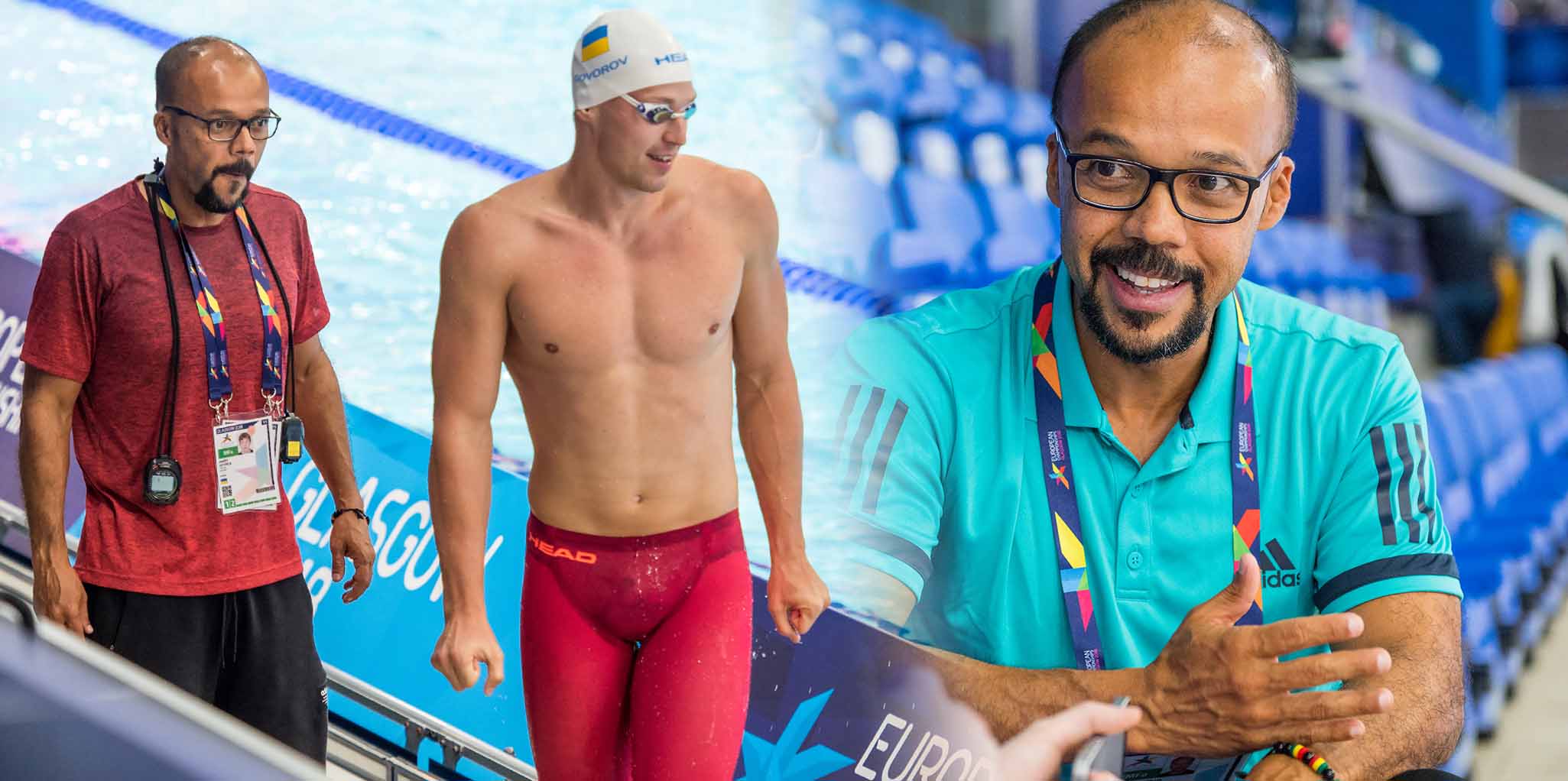The Brazilian Coach Arilson Silva is one of the globetrotters of the international swimming circus. He worked with top-athletes in many countries. Among them are well-known names such as the Olympic champion Cesar Cielo and World Championships medalist Bruno Fratus. Arilson is always on tour, sharing his knowledge with other coaches and gathering inspiration for his work on the pool deck. It immediately becomes clear in our conversation: The coach is eager to share his knowledge, also with us and you.
Arilson, thanks for taking the time. Other top-level coaches like to keep their cards close to their chest.
No problem. I like to share my experiences, because I believe only through constant exchange we can evolve in our sport.
At the moment you mainly work with Andriy Govorov and Liliana Szylagy.
Yes, both athletes are part of my group. Now and then other athletes or teams keep coming to us for a few weeks. We settled down in Tenerife. So far, we have often moved from pool to pool, but now we have a real training base. So we can plan better if more athletes like Shinri Shioura from Japan join us. So far, we were more of a small travel group. In the 30 weeks leading up to the European Championships in summer, we were in 15 different countries and the athletes had 12 competitions.
But this way you also get around a lot and meet many other coaches.
Exactly. In the past years I have made use of that again and again. The most important thing for a coach is that he shows full commitment and dedication. Coach and athlete must agree on where the goal should be and then align their energy. When swimmers and coaches join forces, the result will be more than the sum of the single power of the two.
When you talk to the other coaches, what trends in swim training do you see?
Sports science is becoming increasingly important. Video analysis is no longer a problem today and is part of the training almost every day. For example: We were preparing for Rio 2016 in Japan. There were 65 cameras for one pool. Everywhere they have huge screens where you can look at everything. That was very impressive. All this provides a much larger amount of data about the athletes than it was the case a few years ago. Of course, the coaches have to be prepared for this and be open to it. Many high performance groups have permanent training scientists who analyze, measure and evaluate. Although the coach always has the last word, more and more specialists are being hired for certain areas. In training, teams work with specified athletic coaches or experts for stretching, flexibility and many other experts. Also the mental part is an important component today and still a lot we do not know about the athletes’ mind.
Motivation and philosophy seems to play an important role for you, too.
The head must have a clear direction. I train swimmers to be first. I train them to be their bests. After all, it's about peak performance, so you always strive for the top. My training is about automating the races, especially in the first part, so that the athletes swim at high speed but save energy. In the first part of the race the muscles are not 100% stressed, because you swim automatically, without thinking. Your neural system is trained to do it all by itself. Then in the second part of the race, the muscular system takes over the lead role.
How do you prepare your athletes to retrieve this in competition? What does your training look like?
We work a lot with weights. This is done two to three times a week. Added to this are many exercises for explosiveness, agility and core stability. In my program is a power building block, then the explosiveness - that is, the rapid implementation of the power - and of course the water training, where the whole system is transferred to the pool.
That's the hard part. How do you manage to get the power into the water?
It's a combination of many things. By training on land we get a lot of information about the general strength development but also about body control and physique. There we can also program the body in a more targeted way. Important is the work on the core and also body balance. We use this and in fact the swimmers have to work less in the water than before. In the pool, we can focus on race pace instead. When you are in the water, you train the body for what it has to deliver in the competition.
With Liliana Szilagy, who swims the 200m butterfly, and sprinter Andriy Govorov you have two athletes with very different main events. Does the race pace training also work for the 200m swimmer?
Basically there is not much difference. Of course, the sets are different but the basic idea is the same. For Andriy are many fast 25s. Liliana swims 50s and 100s in high intensity. When Liliana goes into the water, she works on her race. Outside the pool, her body is prepared for the specific requirements. In the water, she trains for the specific time that her race lasts, for the number of strokes she has to make or for the frequency. Of course we can vary that, but those are the points that pool training focuses on.
These are very intense workouts.
That's true. It's uncomfortable. It hurts. But it hurts even more not to win, not to reach the final or not to swim the time you were hoping for. In training you have to acquire what you want to get in the competition. So, be ready!

